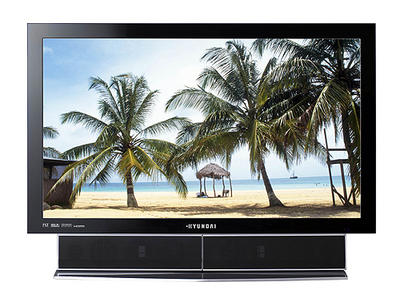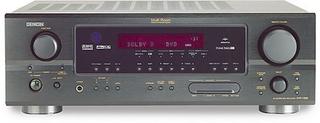Wednesday, August 31, 2005
Optoma H79 DLP Projector Review
"To my mind—and eyes—the H79 qualifies as the first single-chip DLP that delivers acceptable home theater performance. Not only can it produce a stunning, virtually noise-free picture through its DVI inputs, but it does so without inflicting visual fatigue even after more than five hours of continuous critical viewing. Sure, it occasionally displays rainbow artifacts, and it doesn't have as black a black as a good CRT projector, but its wide contrast range, exemplary shadow detail, superb color delicacy, and extremely low mechanical noise level make it hard to deny its seductive allure."First of all noise free picture of DVI is only partially a projector quality. And when I say partially I mean a minute part of it unless electronics designer had majored in English literature although even that will not make it an excuse. It is the source and the cable that make the signal quality. Second, fatigue that Steven describes is projector independent. It is the darkness of the room and the light produced by the projector. Since Optoma is very bright ( claimed 4500:1 contrast ratio) it should make it even worse because your eye must "process" deep dark to bright white transitions which is a torture especially in a dark room. Again, this is not a projector property. And of course the statement about this projector being the first deliver acceptable home theater projector. I have no comments on that except that it is to fund the next vacation.
"Setting up the H79 took me less than an hour from unpacking to final adjustments. Its lens-shift adjustments worked flawlessly. I was especially pleased by the keystone controls. In the past, digital-keystone adjustments on other projectors introduced as many problems as they solved by creating ragged edges and abrupt lateral transitions. But as long as you keep the H79's keystone adjustments within reasonable limits, they will correct screen-geometry problems without creating new ones."What does he mean by "setting up took me less than an hour"? Does he mean he had to ceiling mount it and run the wires. Unless it is Optoma MovieTime DV10, you do not want to install it on your coffee table, right. In Steven's case the projector was only unpacked and, as far as I know from the experience, DLP projectors do not really require calibration as in CRT projectors case - actually, compared to CRT, there is nothing to do - one should just adjust few video controls depending on the gain and color of your screen. This misleads the customer since installation of such equipment is not done in an hour and would take a planning/calculation and some drywall cutting.
And there comes the keystone issue. Everyone knows that keystone degrades the image quality and you should stays as far away from it as possible. In a proper installation there are not many cases where you will be correcting the image with keystone. Keystone was "invented" for data presentations where the presenter does not have much control over the position of the projector and is forced to correct the trapezoid and not drive customers away with distorted charts. In home theater setup you should be aware of what you are buying and if its optical capabilities will produce the desired size and throw angle. At least it is good to know that "we need to keep keystone adjustment within reasonable limits".
Highs and LowsNow, there is no mention about picture quality, any tests - just because the guy watched a movie and we don't even know what material he used does not mean projector is good. And please, don't think I am saying that H79 is a bad projector. All I am saying is that the review looks like a joke to me. And lastly, rainbow effect is something that may be seen by one person and be invisible to another. It solely depends on the eye sensitivity of the person. When reviewer says rainbows are visible, he should mention that it is a personal thing and may not concern you. And the opposite is true as well since reviewer may not see the rainbow while someone else will. The only guarantee of no-rainbow effect is a projector without spinning color-wheel. As long as there is a color wheel someone will still be seeing rainbows.
Highs
• Quiet
• Low fatigue even after many hours of viewing
• Color control for RGB contrast and brightnessLows
• Color-temperature settings not related to any specific color temperature
• Some rainbow effects still visible
Well, what can we do - industry is full of reviews of this type and we have to live with it. They are mostly advertisements rather than true unbiased opinion.
Source: UltimateAV
PermaLink |
















































